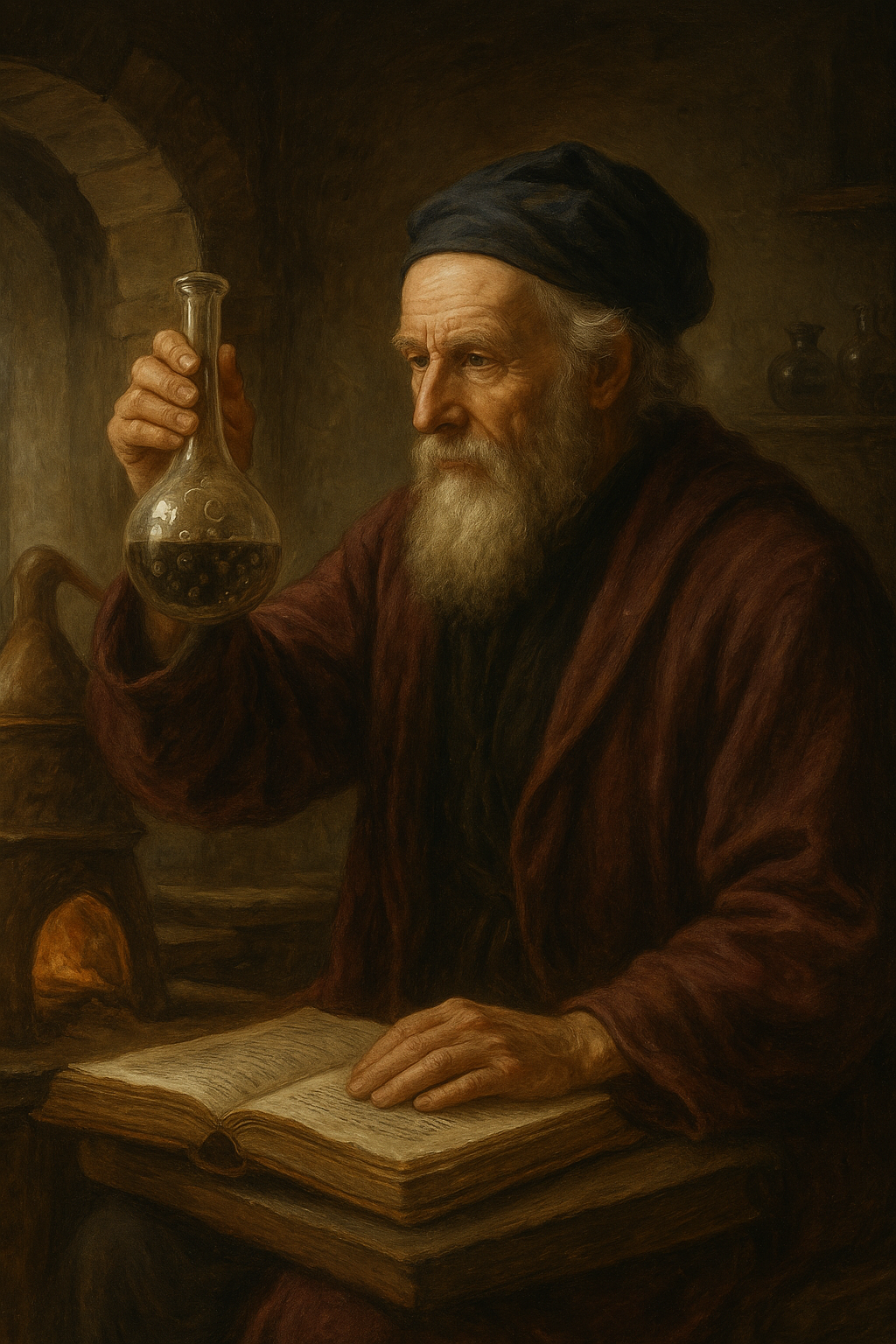Spagyrics is more than a method—it is a lineage. A lineage that traces its golden thread through ancient temples, hidden manuscripts, mystic laboratories, and modern apothecaries. To understand spagyrics is to trace the transmission of sacred plant intelligence across cultures, centuries, and cosmologies.
1. The First Flame: Thoth, Hermes, and the Hermetic Seed
Spagyric alchemy begins in myth and mystery, rooted in the teachings of Thoth, the Egyptian god of wisdom, writing, and healing. Known to the Greeks as Hermes Trismegistus, this figure represents the archetype of the philosopher-alchemist—the one who holds the secrets of transformation.
Thoth is said to have authored the Emerald Tablet, a cryptic text that contains the core axiom of alchemy: "As above, so below." The teachings of Thoth/Hermes form the basis of Hermeticism, a spiritual-scientific worldview that sees the universe—and every living thing in it—as a reflection of the divine. This cosmology seeded the philosophy that would later become the backbone of alchemical medicine.
2. From Kemet to the Caliphate: The Arabic Golden Age
As ancient Egypt’s influence faded, its wisdom passed eastward—into Persia, Mesopotamia, and eventually into the Islamic Caliphate. During the 8th–12th centuries, Arabic scholars preserved, translated, and expanded upon the teachings of the Greeks and Egyptians.
Jabir ibn Hayyan (known in the West as Geber) is widely considered the father of Islamic alchemy. He formalised laboratory techniques such as distillation, calcination, sublimation, and filtration, which remain core to spagyric preparation today. Jabir’s work fused Greek philosophy with experimental science, introducing the idea that each substance had a "spirit" that could be extracted, refined, and recombined.
The Arabic tradition also brought forward the idea that alchemy was not merely about metals or material transformation—but also about healing the human body and soul. Alchemy, they taught, was an inner science.
3. The European Transmutation: Paracelsus and the Birth of Spagyrics
Fast forward to 16th-century Europe, where alchemical philosophy was reawakened through the revolutionary figure Paracelsus (1493–1541). A Swiss physician, botanist, and radical thinker, Paracelsus rejected the sterile, outdated medicine of his time and turned to the plant world for answers.
He coined the term "spagyric" from the Greek:
-
Spao – to separate
-
Ageiro – to reunite
Paracelsus believed that to heal someone fully, you had to work with all aspects of the plant: its body (Salt), spirit (Mercury), and soul (Sulfur). The plant would be separated through a process of fermentation, distillation, and calcination—then purified and recombined. This created a living tincture imbued with the full intelligence of the plant.
Paracelsus also introduced the idea of iatrochemistry—a fusion of alchemy and medicine—that aimed to create potent, bioavailable remedies. He saw disease not as a punishment, but as an imbalance, and alchemy as the process of restoring wholeness.
4. From Secret Societies to Renaissance Pharmacies
Following Paracelsus, spagyric medicine spread through the Rosicrucians, alchemical societies, and early pharmacopoeias of Europe. Though much of the practice went underground due to religious and political pressures, it never disappeared.
In places like Renaissance Italy, France, and Germany, physicians quietly continued the lineage, working in backroom labs and monastic herbariums. In the 17th and 18th centuries, alchemy gradually transformed into chemistry, but the mystical branches of plant alchemy remained intact in esoteric circles.
5. The Modern Rebirth: Spagyrics in the 21st Century
Today, spagyrics are experiencing a renaissance. As people seek healing modalities that are both scientific and sacred, spagyric tinctures offer a bridge. They combine full-spectrum herbal potency, energetic resonance, and archetypal intelligence.
Contemporary alchemists—many trained in traditional herbalism, Ayurveda, and anthroposophy—are returning to the slow, sacred methods of plant extraction. They ferment herbs, calcine the spent marc, purify the salts, and reunite them with the tincture—creating biochemical reactions that yield plant esters, potassium-based electrolytes, and deeper energetic imprints.
These aren’t just extracts. They are living medicines.
And for brands like Phenxx, spagyrics aren’t a trend—they are a devotional return. A remembrance of a time when medicine was sacred, plants were teachers, and transformation was the point.
In Every Drop, a Lineage
When you anoint your skin with a Phenxx Alchemē Oil, you touch a thread that stretches through time: from the temples of Egypt, to the fires of Persia, to the manuscripts of Europe, to the ritual of your body today.
Spagyrics is not just what we make.
It’s how we return.

